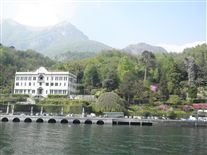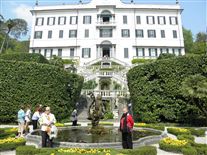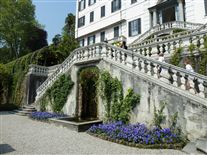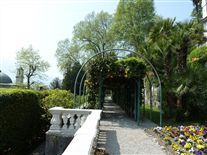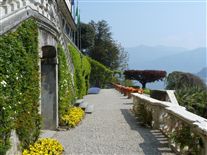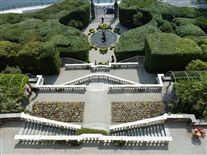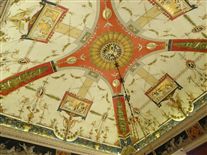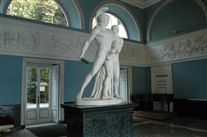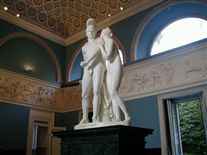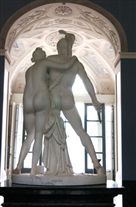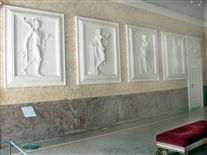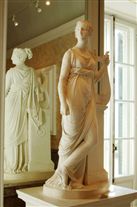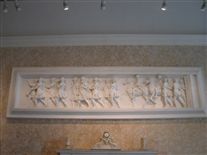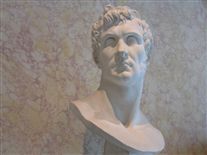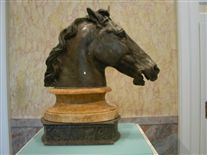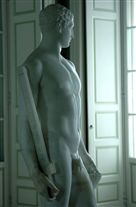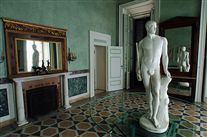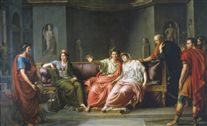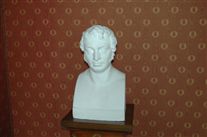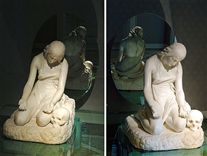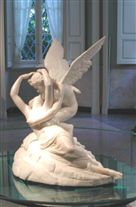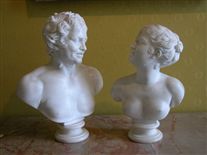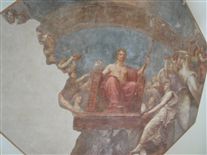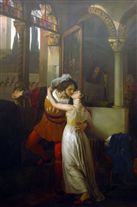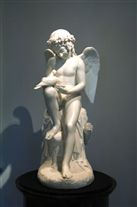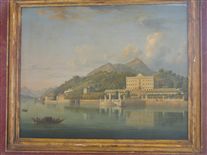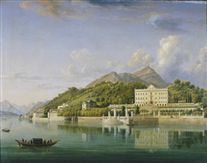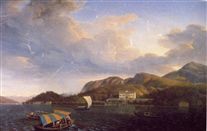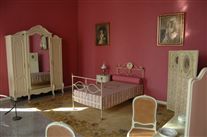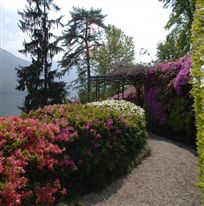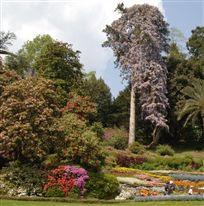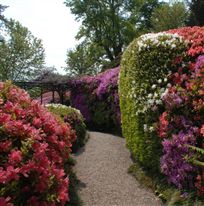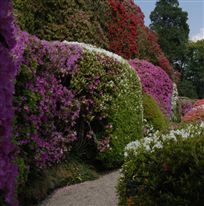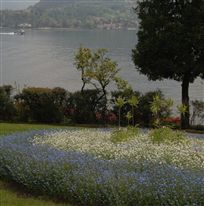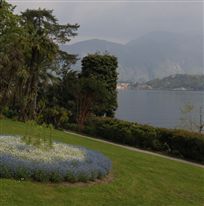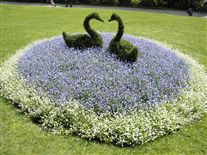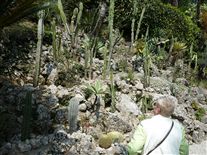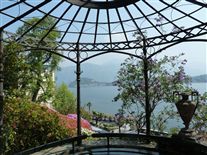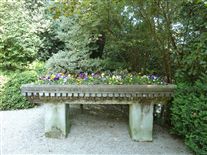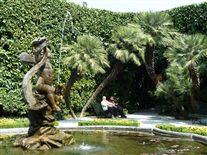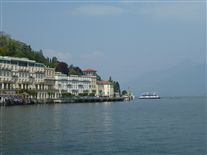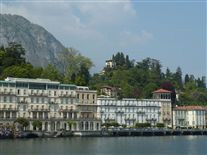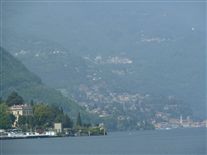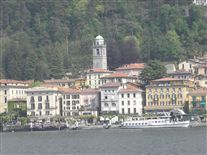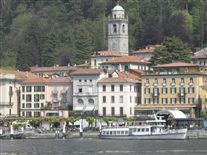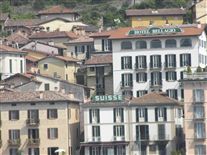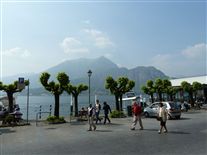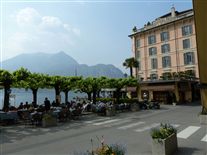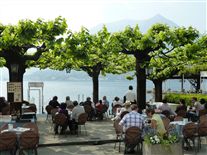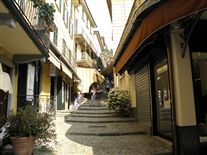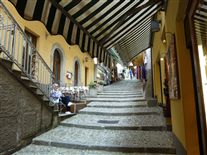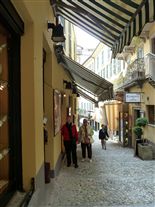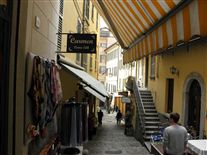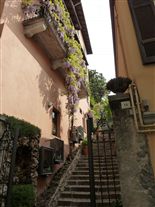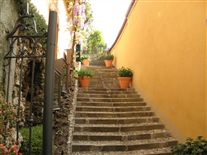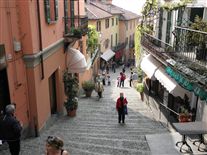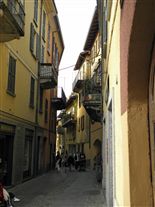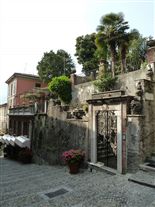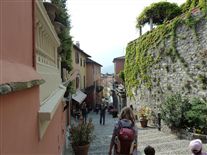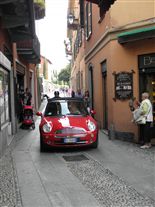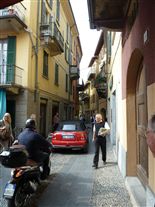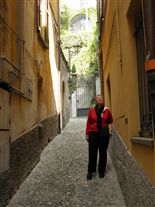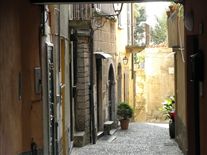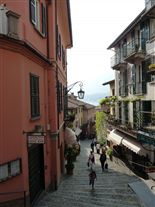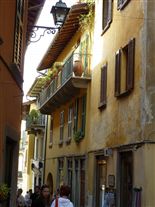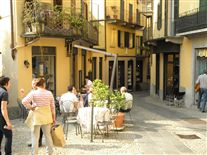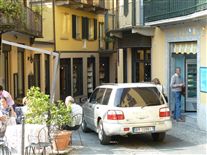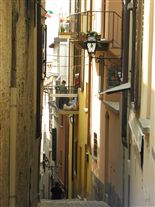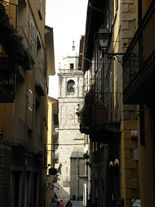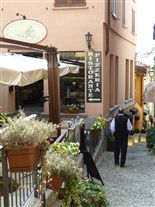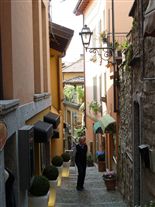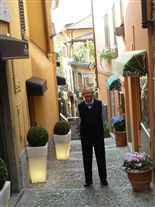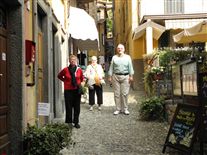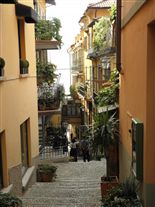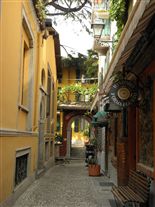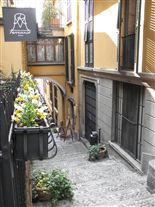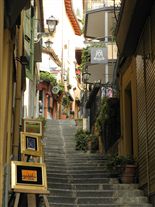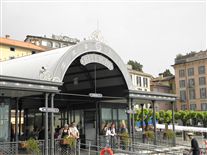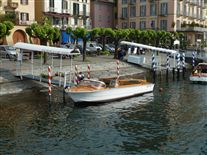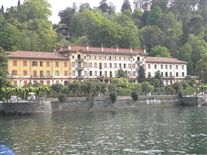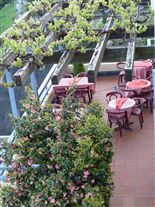P4190315.jpg
Villa Carlotta - Click 'Details' for more information
History:
The building of the villa was begun in 1690 by the Milanese Giorgio II Clerici (1648-1736). The Clerici family, originally from the north of the Como Lake area, accumulated a great richness thanks to the textile trades of Giorgio I (1575-1660) and his sons Pietro Antonio (1599-1675), who was titled as Marquis, and Carlo (1615-1677) who became owner of numerous palaces in Milan and Brianza. Carlo's son, Giorgio II inherited fabulous richness and an important social position; he became senator in 1684 and in 1717 he was nominated as President of the Senate. He conceived the villa in Tremezzo as a real manifesto of his family success. His 21 years old great-grand son Antonio Giorgio (1715-1768) inherited his immense fortune and completed the building of the villa.
Antonio Giorgio, Baron of Sozzago, Marquis of Cavenago, Knight of the Golden Fleece and Milanese patrician had an intense life: charming, owner of a regiment of infantry, generous and squandered, collector of masterpieces of art (he ordered, for example, to Tiepolo the frescos for his house in Milan) he died in 1768, after having dissipated all his richness. Claudia, Antonio Giorgio's daughter and Earl Vitagliano Bigli's wife, was the last of the Clericis to own the villa in Tremezzo. She sold it to Gian Battista Sommariva in 1801.
During the World War I , Villa Carlotta was not sequestered by the Italian State, as the other properties of enemy subjects in Italy, but placed under the managements of an administrator. After the end of the war the building risked to be sold in a auction in favour of the Opera Nazionale Combattenti. Thanks to the strong will of senator Giuseppe Bianchini and the Rotary Club of Milan, the villa was finally entrusted to the Ente Villa Carlotta, a foundation especially constituted by a royal decree on 12 Mai 1927. This foundation still nowadays takes care of the villa in Tremezzo and uses all the amounts of the entrance fees for the maintenance and the conservation of the building, the works of art and the gardens.
4d4185550aae9.jpg
Villa Carlotta Marble Room - Click 'Details' for more information
MARBLE ROOM:
This room has an extraordinary carinate vault painted in coffers, stars and rosettes in fake stuccowork. Under this vault, along the perimeter is located one of the masterpieces of the collection: the high relief with the Entrance of Alexander the Great in Babylonia by the Danish sculptor Bertel Thorvaldsen (1768-1844). This work was brought about in a first version in stucco for the Quirinale Palace in Rome on the occasion of Napoleon's visit. Completed in June 1812, it was so beautiful that Napoleon ordered a marble replica for the Pantheon in Paris. The changed political conditions arrested the very expensive order, till Gian Battista Sommariva decided to relieve it in 1818. The 33 marble slabs of the frieze arrived in the villa in Tremezzo between 1818 and 1828 composing year after year the scene of the triumphal entering of Alexander the Great and his army in Babylonia. Alexander is on a quadriga, guided by a winged Victory; he is followed by two squires with weapons, the impetuous horse Bucephalus, his cavalry and his infantry, an elephant with the spoils of war and a slave king. The last two character at the end of the frieze are a self portrait of Thorvaldsen and a portrait of Sommariva. On the other side of the frieze Peace is guiding the Babylonia citizens: the satrap Mazzeo with his sons, priests and dancers, soothsayers and musicians, fishermen and shepherds.
At the centre of the room is located the monumental group of Venus and Mars, a work by Luigi Acquisti. This statue was commissioned by Sommariva with the explicit aim to celebrate, with such monumental and allegorical representation, the peace brought in Europe by the Napoleonic government. What makes this work unique is the perfect balance between two extremes: the fierce Mars and the sweet Venus. This sculpture, originally located directly on the floor, was in 1822 raised on a precious monolithic block of Varenna marble.
Plaster_Room4d70ed043dbec.jpg
Villa Carlotta Plaster Room - Click 'Details' for more information
The Plaster Room:
This room, on the right of the marble room, still maintains the atmosphere of Sommariva's age. On the walls are located six ornamental stucco panels with scenes of Cupids and Faunes by Camillo Pacetti (1758-1826); at the centre of the main wall a marble fireplace, work of Thorvaldsen's atelier, is decorated with The Triumph of Bacchus and Ariadne; above it, a bas-relief in stucco by Luigi Acquisti shows the Entrance of Francesco I in Vienna. It's the original model for the marble sculpture created for the minor opening of the Arch of Peace in Milan: the subject, originally the Entrance of Napoleon in Milan, was changed in 1816, after the new political situation. A military band with four elements, a group of infantrymen, the sovereign riding on horseback, officers and soldiers wearing ancient or contemporary clothes give to this work a surprising idea of rhythm.
The Muse Terpsichore by Antonio Canova (1757-1822) is the precious original plaster model made for the marble sculpture representing the muse of dance commissioned by Sommariva in 1811. Born as a portrait of Alexandrina Bleschamps, wife of Napoleon's brother, Lucien Bonaparte, the sculpture acquired a more idealized physiognomy following Sommariva's will. This plaster is a real masterpiece for the its plastic art, especially in the drapery; it's still nowadays characterized by the 'repère', small nails, very useful instruments in the creative process of Canova's art. With a sketch, the artist developed the idea of a sculpture; thanks to this first idea he realized two models, one in reduced scale, generally in terracotta and after this a bigger model that allowed him to deepen the study of the composition. The next step was the realization of a life-size model in clay and after this the definitive model, in plaster; in the key-points of such a model some small nails were hammered in, in order to give to the Canova's scholars the necessary points of reference to copy the sculpture in the marble. The hard work done, Canova finished the sculpture.
PalamedesRoom4cfd281018179.jpg
Palamedes Room - Click 'Details' for more information
PALAMEDES' ROOM:
In this room is located one of the most famous masterpieces of Antonio Canova. Palamedes, king Nauplio's son, inventor of chess and dice games and of some letters of the Greek alphabet, was able to discover the false madness of Ulysses, obliging him to leave his island, Itaca, and go fighting in the Troy war. Ulysses never forgave him and had his revenge by making Palamedes condemned to death with false accusations. In this subject - the cultivated and betrayed hero - Sommariva, after loosing his political power, recognised part of his personal history. He commissioned this sculpture to Canova, but in 1805, when it was still in the Canova's atelier in Rome, the statue felt down, because of a flood of the Tevere river, and broke in many pieces. Canova personally restored it, between 1806 and 1808. The sculpture arrived in Tremezzo in 1819; in the villa it was located in a room with mirrors on the walls in order to show up its formal perfection.
WicarsRoom4d70ea9f8b5df.jpg
Wicar's Room - Click 'Details' for more information
WICAR'S ROOM:
In this room is located the large oil painting The reading of the VIth book of the Aeneid by the French painter Jean-Baptiste Wicar (1762-1834). 23 b.C., Rome: in front of the emperor Augustus, the poet Virgil is reading his poem. Ottavia, Augustus' sister, faints while she's listening to the verses that evoke in her mind the death of her son, Marcello. Augustus stops the reading; Virgil stands to the left; to the right are Maecenas and general Agrippa, portraits of Sommariva and Napoleon. This painting was commissioned in 1818, thanks to Antonio Canova, and before arriving in the villa of Tremezzo was exhibit with great success in Milan in 1821.
Next to the large painting are located a portrait in plaster of G. B. Sommariva (about 1830) and a portrait in alabaster of Napoleon the Emperor (1805) by the Dutch Van Lint, before in the hall of mirrors of the Royal Palace in Milan.
MagdalenesRoom4cfd291f5ad4b.jpg
Magdalene's Room - Click 'Details' for more information
MAGDALENE'S ROOM
In this room is located an anonymous and coeval replica of the Repentant Magdalene, by Canova. G.B. Sommariva, who was also the owner of the original work (placed in his Parisian palace) created for the sculpture a specific location: a small cabinet with grey silk tapestry an alabaster lamp to enhance the its delicate sensuality.
4d417935318d0.jpg
Eros and Psyche's Room - Click 'Details' for more information
EROS AND PSYCHE'S ROOM:
In the centre of the room it's possible to admire the marble group Eros and Psyche reclining by Antonio Tadolini, one of the best Canova's scholars. It's a replica taken from the original model of Antonio Canova of the sculpture commissioned by the Russian prince Yussupoff (today at the Hermitage museum in St. Petersburg). Made from a block of Carrara marble of exceptional beauty, this sculpture arrived in Tremezzo in 1834 where it became a real icon of sensuality and passion. Near the wall, on two precious pedestal in Varenna marble are located the busts of Venus and Paris by Pietro Fontana (1757-1822), inspired by the famous canovian models. In a showcase is exhibited a biscuit representing a Triton with a Nymph; above it, a bas-relief medal with the portrait of Napoleon during his Italian campaign, made in 1798, by Francesco Lazzarini (?-1808): it's one of the very rare work of this sculptor and it well represents the Sommariva's cult for Bonaparte.
The apotheosis of Napoleon the Emperor is the subject of the frescoes of Andrea Appiani (1754-1817) hanging from the ceiling and the wall: they are the sole evidence - survived the bombing of 1943 - of the large decorative cycle done by Appiani for the Royal Palace in Milan in 1808. In the great octagonal medallion, Napoleon is portrayed on a imposing throne, supported by four winged victories and surrounded by the Zodiac and the Hours. In the four lunettes are represented the cardinal virtues: Prudence with mirror, sand-glass and sphinx, Justice with sceptre and Law code, Fortitude with lion, shield and club and Temperance with a winged genius mixing water and wine. In this room is also located a precious neoclassical chest of drawers in inlaid walnut, varnished and gilded, produced around 1776 by Giuseppe Maria Bonzanigo (1744-1870), based on the drawing by Piacenza and Rondoni and originally in the Royal Palace in Milan.
RomeoJulietRoom4cfd2bd90fe92.jpg
Romeo and Juliet's Room - Click 'Details' for more information
ROMEO AND JULIET'S ROOM:
In this room are located some of the most important paintings of the museum. The last Adieu of Romeo and Juliet, 1823, oil on canvas by Francesco Hayez (1791-1882) is a manifesto of the Italian Romantic painting. Inspired by the famous Shakespearean tragedy, this painting was commissioned by Sommariva in 1823. The scene - in the house of Juliet, the young woman is embracing Romeo for a last kiss in the pink light of dawn - is characterised by an interesting structure and the chromatic expression inspired by the ancient Venetian tradition of coloration. This is followed by the painting The Spicery of a cloister, 1823, oil on canvas by Giovanni Migliara (1785-1837). In a court, some friars are working to prepare potions and medicaments: it's an extraordinary scene, very rich in details, such as the frescos on the vaults, the cat moving between the pots, the smoke of the alembics, the window in the background, open to another court with green trees.
The third painting in this room is Atala's last communion, by Pierre-Jérome Lordon (1780-1838) done in 1808 and exhibited the same year in the Parisian salon of arts. It's a very involving scene, with strong lights contrasts and romantic awesomeness. The subject is taken from the epilogue of Atala, Chateaubriand's novel: the dying heroine, helped by her lover Chactas is receiving the Holy Communion from father Aubry. In this room are also located two extraordinary vases in Sèvres porcelain, with a dark blue enamelled background decorated in pure gold and two sculptures, the Sensibility, a very rare plaster model by the French Antoine-Denis Chaudet (1763-1810) and Eros provides two doves with drink, 1821, by Luigi Bienhaimé (1795-1878).
ViewsRoom4d70b8f22bcee.jpg
Views' Room
VIEWS' ROOM:
This room is characterized by the ceiling decoration by Ludovico Pogliaghi and his atelier. It's a complex decorative work, rich in Art nouveau references associated with revival motifs: four vaulting cells, decorated with vegetal festoons culminate in central rosette with a mermaid. The artificial bas-relief with mythological marine motifs is a work of Gerolamo Poloni, a Pogliaghi scholar. In this room are located some ancient view of the villa: Villa Sommariva, 1823, oil on canvas by Giuseppe Bisi, View of the villa and the garden from the lake, 1819 by Joseph-Xavier Bidauld (gently loan by the Brera Accademia di Belle Arti, in Milan); In front of Villa Sommariva, 1842, by Amélie Gundlay; Visiting the Sommariva's garden by Alessandro Sanquirico and Bellagio from Villa Sommariva, both painted in the first half of the XIX Century.
4ce282c6bbcbe.jpg
Villa Carlotta Botanical Gardens - Click 'Details' for more information
The garden:
The garden-park of Villa Carlotta (about 8 hectares) is a very fascinating place: its favourable position, but also the harmonic coexistence of styles, the variety of species, the literary suggestions make it worthy of a visit. Come to see the Italian garden that dates back to the XVII Century with its geometrical schema, stair and terraces, statues and fountains; come to feel the echoes of the Romantic period, still alive in the structure of the park with old trees of big size and views of great charm; come to live the impressive vegetal architecture of the second half of the XIX Century with the monumental azaleas and rhododendrons and the unending richness of rare plants and species!

